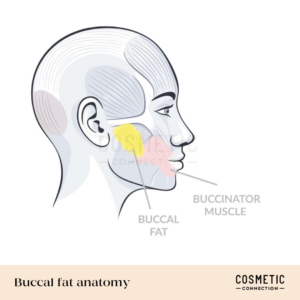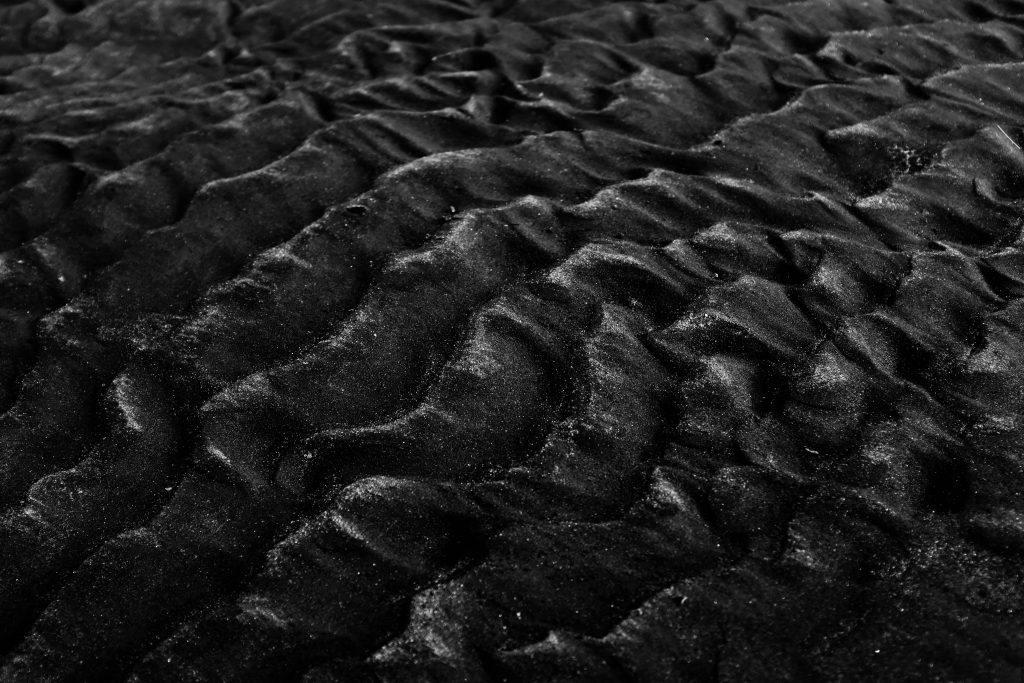Buccal fat removal is definitely a trending cosmetic surgery treatment, but as with all things medical, just because something is trending does not mean you should jump right in and go under the knife without researching the risks, and whether or not you’re actually suitable. Here, we will discuss some of the most important things to know before considering buccal fat removal.
What is buccal fat?
Buccal fat, also known as Bichat’s fat pad, is the small pocket of fat on the inside of your lower cheeks, between your cheekbones and jawline. Buccal fat is a normal anatomical feature that plays a role in both facial aesthetics and in facilitating facial muscle movement. It generally extends somewhat backwards towards the back of the jawline and upwards into the temples.

What is buccal fat removal?
Also known as a buccal lipectomy or bichectomy, buccal fat removal is a cosmetic surgical procedure that involves removing part of all of the buccal fat, usually through a small incision on the inner surface of your lower cheeks, inside your mouth.
Why is buccal fat removal trending?
Buccal fat removal has been trending in cosmetic surgery for the last few months as celebrities have started to become more open about their cosmetic procedures. Chrissy Teigan recently opened up about her buccal fat removal surgery, and the media coverage soon followed, including speculation about which other celebrities may have also had the procedure.
Who is a good candidate for buccal fat removal?
Buccal fat removal is not suitable for everyone. Some people find that they have large buccal fat pads, and this gives their face a round, bottom heavy appearance, and ‘chipmunk’ cheeks. Buccal fat does not change with fluctuations in weight, and so those with large buccal fat pads notice that despite strict diet and exercise, their face remains round. A good candidate for buccal fat removal should be in good health with no significant medical conditions, not smoke, have moderate to large buccal fat pads, and reasonable expectations about what can be achieved with cosmetic surgery. Nothing will put a cosmetic surgeon off operating faster than a patient with high expectations. Always remember that we compare the result to how you were before surgery, not how you want to look.
What are the benefits of buccal fat removal?
Removing the buccal fat aims to give the lower face a slimmer appearance, and highlight the definition of your cheekbones. It can give the lower cheeks a hollow appearance. It can make your lower face appear less chubby, and also more symmetrical. As the procedure uses intra-oral incisions, there will not be any visible external scarring.
What are the risks of buccal fat removal?
Like all surgery, buccal fat removal has risk. If performed under general anaesthetic, then there are some significant risks of anaesthesia that your specialist will discuss with you. Performing the procedure under local anaesthetic eliminates the risks of general anaesthesia. There are also generic surgical risks such as infection, excessive bleeding, fluid collections called seromas that may require drainage, and injury to nearby facial structures such as the parotid duct (a tube that carries saliva to the mouth) and facial nerves that control movement. Finally, there are aesthetic risks, including asymmetry, an unsatisfactory result, and arguably the most important one; premature ageing.
Can buccal fat removal age you?
With age the buccal fat pad generally reduces in size. If you have had your buccal fat pad removed, while you may look sharp and contoured now, as the facial structures change with age you may start to notice that your face looks older, sooner. This can be accentuated by weight loss which can leave you looking gaunt and hollow. Removing the skin support provided by the buccal fat pad can also make you more prone to developing accordion and smile lines. Some surgeons claim that the risk of this can be mitigated by not removing all of the buccal fat, but then this brings forth the risk of a disappointing result. Many experienced facial cosmetic and plastic surgeons do not like to remove the buccal fat for this reason, unless it is significantly large in size. If you having excessive hollowing and premature ageing after buccal fat removal, treatment of this would require injecting fillers into the hollow areas.
What is the recovery after buccal fat removal like?
While the recovery from buccal fat removal surgery varies from person to person, you can generally expect to require 7-10 days of healing time. You’ll have some bruising, tenderness and swelling which may be uneven, and can be managed with simple pain-relief and a cold compress.
Certain activities will be restricted, and you’ll need to practice good oral hygiene to minimise the risk of infection and other complications. Your operating surgeon will discuss the buccal fat removal aftercare with you in your pre-operative consultation.
Is buccal fat removal performed under local anaesthetic or general anaesthetic?
Buccal fat pad removal can be performed under both local and general anaesthetic. While general anaesthetic may seem like the better option, there is more to anaesthesia than this. General anaesthetic has many significant risks that local anaesthetic does not. The advantage of general anaesthetic is that you are asleep, not aware of the procedure, and therefore the surgeon can work uninterrupted. Local anaesthetic avoids the significant risks of general anaesthetic, and can be combined with certain medications to keep you relaxed during the procedure. The result from buccal fat removal under local anaesthetic is the same as when performed under general anaesthetic.
What to do if I regret getting buccal fat removal?
Regret after buccal fat removal or any cosmetic surgery for that matter, is always a possibility. If you are unhappy about the result, or worried that you made the wrong decision, the first step is to schedule a follow-up appointment with your cosmetic or plastic surgeon.
An option to treat hollow lower cheeks caused by buccal fat removal is by using dermal filler. Fillers can be used to essentially fill in the hollow areas to give your face a more natural look. For those worried about the development of thin, wrinkled skin due to a lack of buccal fat support, collagen stimulating injections can be used to restore volume and thicken the skin.
What are the non-surgical alternatives to buccal fat removal?
Before jumping in to buccal fat removal surgery and permanently changing your appearance, and risking premature ageing, non-surgical treatments to slim your face are worth considering, especially when you don’t have large buccal fat pads.
A combination of cheekbone fillers, chin fillers and jawline slimming injections can be used to achieve a slimmer, more contoured shape to your face. While not permanent, these are convenient, have no downtime, cause no long term damage to your facial tissues, and can be adjusted at your maintenance sessions as your face and aesthetic preferences change over time.
Our non-surgical facial slimming procedure is a popular option for people interested in buccal fat removal, but who don’t want the risk of surgery.
Watch our lead doctor, Dr. Aaron Stanes, discuss buccal fat removal on TikTok, Instagram, Facebook and Youtube.


